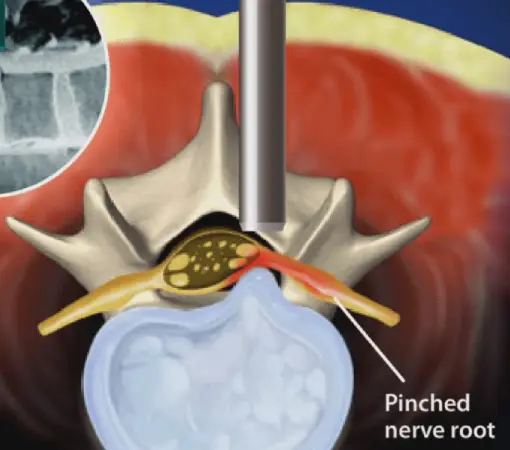Spine Surgeon
Endoscopic Discectomy Surgery in Mumbai
Endoscopic discectomy
Endoscopic discectomy surgery in Mumbai, a minimally invasive surgical intervention, serves to eliminate herniated disc materials responsible for pain in the cervical spine, thoracic spine, and lower back. Recognized for its minimally invasive nature, this procedure offers a targeted approach to treating disc herniation, minimizing damage to surrounding tissues and speedy recovery. Endoscopic spine surgery boasts a high success rate, with approximately 80 to 90 percent of patients experiencing reduced pain and improved mobility following the procedure.
Who needs Endoscopic discectomy?
- Persistent back or neck pain.
- Pain radiating down the arms or legs (radiculopathy).
- Numbness or weakness in the extremities.
- Difficulty walking or performing daily activities due to pain or discomfort.
- Symptoms that have not responded to conservative treatments such as medication, physical therapy, or injections.
How do spine surgeons do endoscopic discectomy?
The patient undergoing endoscopic discectomy may receive either general anesthesia or a combination of local anesthetic and sedation. Next, the surgeon makes one small incision, typically around 1 cm in size, or two incisions measuring about 7 mm each near the affected disc. Using fluoroscopic guidance, a guide wire is carefully inserted through the incision(s) and directed towards the herniated disc. Subsequently, the endoscope, fitted with a camera, is threaded over the guide wire, providing a visual feed of the affected area on a monitor. To enhance visibility, water is used. Specialized instruments are then passed through the endoscope to remove the herniated portion of the disc or any fragments compressing the spinal nerves. Upon completing the procedure, the surgeon withdraws the endoscope and proceeds to close the small incision(s) using either sutures or adhesive strips.
How long does it take to recover from endoscopic discectomy?
During the initial week after surgery, it’s advised to avoid lifting objects heavier than 5 to 15 pounds, with a restriction on lifting over 25 pounds for the following six weeks. Typically, individuals can resume work within one to four weeks post-surgery, depending on their individual recovery progress.
What are the advantages of endoscopic discectomy?
- Endoscopic surgery results in minimal tissue damage and reduced postoperative pain due to the use of smaller incisions.
- The procedure leads to minimal scarring, enhancing the appearance following surgery.
- It enables shorter hospital stays and the possibility of outpatient procedures, allowing patients to return home on the same day.
- Recovery and resumption of daily activities occur at a faster pace.
- There is a decreased risk of complications, such as infections and excessive bleeding.
Best spine surgeons at Synapse Spine Mumbai utilize advanced Endoscopic discectomy surgery in Mumbai to access and remove herniated disc material, resulting in minimal tissue damage and faster recovery. Book your appointment to discuss this innovative treatment option.

